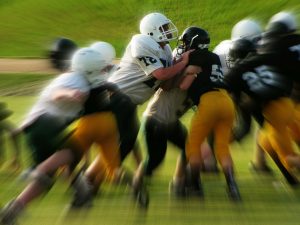The Basics Of Sports Photography
Taking photos of subjects in motion is one of the biggest challenges of many photographers. You need to take hundreds of shots, in order to be able to select one or two good ones. However, if you learn and apply the basics of sports photography, your success rate is going to improve quite a lot.
The first thing to know is that subjects in rapid motion such as athletes and racing cars can be captured more efficiently by using short exposure times. This means you’ll have to compensate for these times by using bigger aperture values. When the optic diaphragm is largely open, there’s a greater  amount of light that enters the camera, thus calling for shorter exposure times. This is why prime lenses with values of f/1.4 or f/1.8 are among the must-have tools of a sports photographer. They enable you to obtain impressive images. Moreover, the main subject is going to be in focus, while the background is going to appear blurred and out of focus, thus directing the eyes of the viewer towards the athlete in motion, rather than on other elements in the image. This type of shot is possible only when the depth of field is narrow, hence the need for such prime lenses.
amount of light that enters the camera, thus calling for shorter exposure times. This is why prime lenses with values of f/1.4 or f/1.8 are among the must-have tools of a sports photographer. They enable you to obtain impressive images. Moreover, the main subject is going to be in focus, while the background is going to appear blurred and out of focus, thus directing the eyes of the viewer towards the athlete in motion, rather than on other elements in the image. This type of shot is possible only when the depth of field is narrow, hence the need for such prime lenses.
The other secret of great sports photography is the ability of the camera to take a series of shots in one go. You should use a camera with at least 5 fps  continuous drive. This would enable you to obtain lots of images of every movement of the main subject. Most of them are going to be bad, but you’ll have good chances to find a few really amazing ones among them. This is what all professional photographers do. Nonetheless, their equipment allows for such performance. If you want to obtain the same image quality with a compact camera, you may have to work a lot more. You’ll also need to be extremely lucky, as there’s always a small delay between the moment your eyes spot a great picture and the moment your finger presses down the shutter. By using the continuous drive function, you increase your odds to capture the perfect spot, even though your eyes won’t see it right away.
continuous drive. This would enable you to obtain lots of images of every movement of the main subject. Most of them are going to be bad, but you’ll have good chances to find a few really amazing ones among them. This is what all professional photographers do. Nonetheless, their equipment allows for such performance. If you want to obtain the same image quality with a compact camera, you may have to work a lot more. You’ll also need to be extremely lucky, as there’s always a small delay between the moment your eyes spot a great picture and the moment your finger presses down the shutter. By using the continuous drive function, you increase your odds to capture the perfect spot, even though your eyes won’t see it right away.
Last but not least, great sports photography is a matter of practice. The more you try, the better you’re going to become. This is how you can reach perfection.